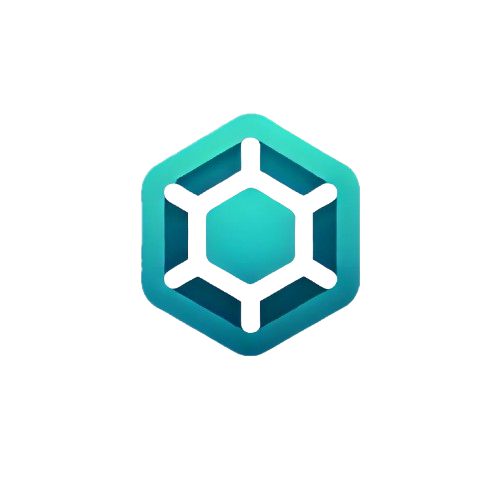· Sweady Team · Developer Productivity · 5 min read
Test Optimization Audit: Streamlining Your Slack-GitHub Integration
Discover actionable insights on optimizing tests within your Slack-GitHub integration to accelerate code reviews, reduce delays, and boost developer productivity.
Test Optimization Audit: Streamlining Your Slack-GitHub Integration
In today’s fast-paced development environments, effective communication and seamless workflows are critical. Integrating tools like Slack and GitHub can significantly enhance your team’s productivity and streamline your development process. However, to fully harness the power of these integrations, it’s crucial to conduct a Test Optimization Audit regularly.
This guide will walk you through the process of optimizing the integration between Slack and GitHub for a more efficient and collaborative development environment. We’ll cover best practices, tips, and actionable steps for improving this critical part of your development workflow.
Why Optimize Your Slack-GitHub Integration?
Before we dive into the specific steps for optimization, let’s explore why this is an important aspect of modern development practices:
- Enhanced Communication: By ensuring that notification systems are properly configured, teams can receive real-time updates on changes, pull requests, and CI/CD results, helping everyone stay informed and aligned.
- Reduced Downtime: Faster feedback loops with reliable notifications can minimize delays caused by pending reviews or unnoticed updates, accelerating the development and deployment processes.
- Improved Code Quality: With dedicated communication channels, reviewers can provide timely feedback and foster a culture of continuous improvement through efficient code reviews.
Step 1: Evaluate Your Current Workflow
Before making changes, it’s essential to understand your current workflow. Begin by asking these questions:
- How are updates currently communicated?
- Are notifications reaching the right people?
- What typical delays or bottlenecks do you encounter?
Taking notes on these points will give you a baseline to measure improvements against.
Step 2: Configure Dedicated Slack Channels for Pull Requests
Using tools like Sweady (note: as of May 2025 there is no widely recognized tool named “Sweady” specifically documented in major developer resources; ensure this tool exists within your organization or clarify its source), automatically create dedicated Slack channels for each pull request. This gives you a centralized place for discussion, ensuring all relevant messages are in one place. Here’s a simple setup approach:
- Automate Channel Creation: Use a webhook to trigger the creation of a new Slack channel when a pull request is made.
- Post Updates Automatically: Configure your GitHub repository to send updates about pull request changes directly into the newly created Slack channel.
Example setup with a webhook might look like:
{
"name": "web",
"active": true,
"events": [
"pull_request"
],
"config": {
"url": "https://slack.yourcompany.com",
"content_type": "json",
"insecure_ssl": "0"
}
}Step 3: Optimize Notification Settings
Notifications can often become overwhelming if not managed properly. To avoid notification fatigue:
- Set Priorities: Decide which updates are critical and adjust the notification settings to highlight these alerts.
- Use Filters: Implement filtering when necessary to manage the flow of less critical updates.
- Schedule Routines: Customize Slack to pause notifications during non-working hours to respect work-life balance.
Step 4: Integrate CI/CD Updates Directly into Slack
CI/CD updates provide crucial information on build and deployment statuses. Integrate these updates directly into your Slack channels to ensure timely awareness of pipeline statuses. Here’s an example of what an integration setup could look like:
- Connect GitHub Actions or Jenkins with Slack: Most CI/CD tools offer Slack integrations or plugins—such as those available from FluxCD[2]—so take advantage of them for seamless updates.
name: CI/CD Notification
on:
push:
branches:
- main
jobs:
notify_slack:
runs-on: ubuntu-latest
steps:
- name: Notify Slack
uses: rtCamp/[email protected]
env:
SLACK_WEBHOOK: ${{ secrets.SLACK_WEBHOOK }}
SLACK_MESSAGE: "Build completed: ${{ github.run_id }}"Step 5: Regular Audits and Feedback Loops
Finally, make regular audits part of your workflow to continuously improve your systems. Schedule bi-monthly or quarterly review meetings (both intervals are common industry practice) to:
- Analyze Notification Logs: Understand what notifications were effective and which were ignored.
- Gather Team Feedback: Talk to your team about what’s working and what isn’t in your current Slack-GitHub integration setup.
- Implement Iterative Changes: Based on feedback, make small adjustments and measure their impact over time.
Conclusion
A properly optimized Slack-GitHub integration can dramatically improve efficiency in development workflows[2]. By conducting regular test optimization audits and making iterative improvements, your team can enjoy enhanced communication, fewer bottlenecks, and a more collaborative coding environment.
These steps are not just a one-time task but a continuously evolving process. As technology and team dynamics change, regularly revisiting these steps will ensure that your integrations continue to serve your team’s needs effectively.
By following this guide—and continuously refining these processes—you will set your team up for success by reducing time-to-deployment while improving overall code quality[4]. For more information on optimizing workflows with automation platforms such as FluxCD (a leading open-source continuous delivery solution)[2], explore their documentation or other trusted resources relevant as of May 2025[2][3].
Happy Developing!
Optimize your development workflows with careful planning, automation, and actionable communication — ensuring your team remains focused and productive. If you found our guide on streamlining your Slack-GitHub integration helpful, you’ll definitely want to check out 5 Ways to Reduce PR Bottlenecks Using GitHub-Slack Integration. It’s packed with actionable insights and practical steps to help your team tackle those pesky pull request delays head-on. Give it a read and see how you can refine and speed up your review processes even further!
 Sweady
Sweady